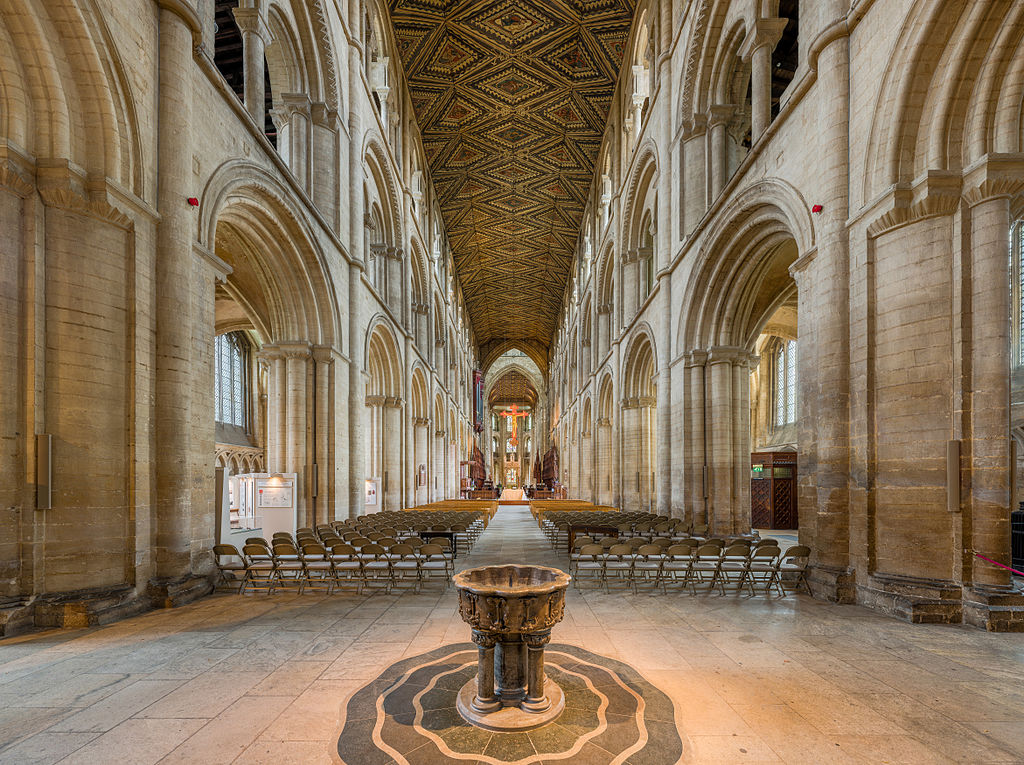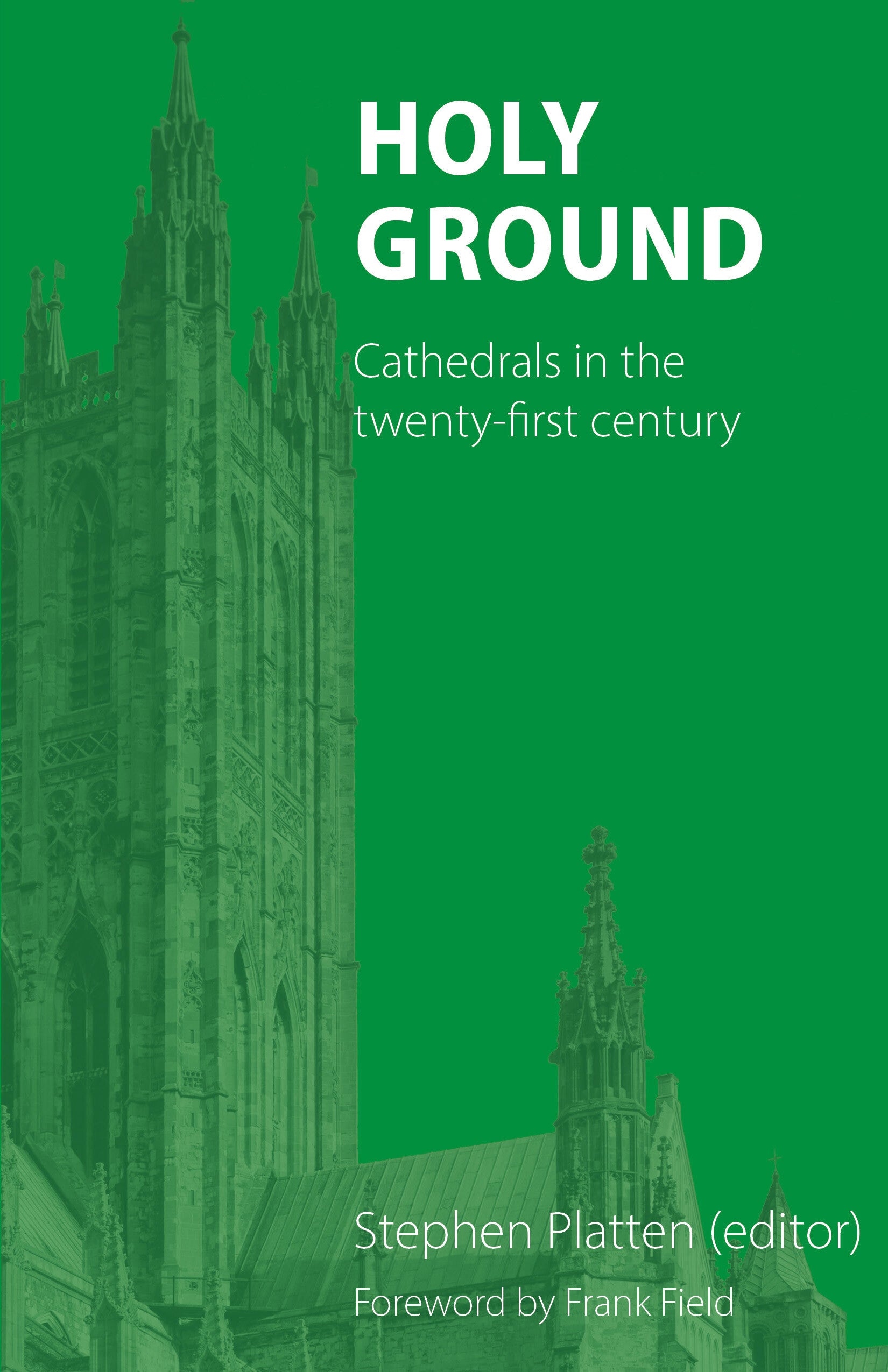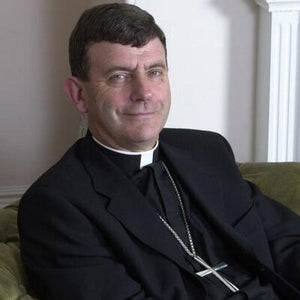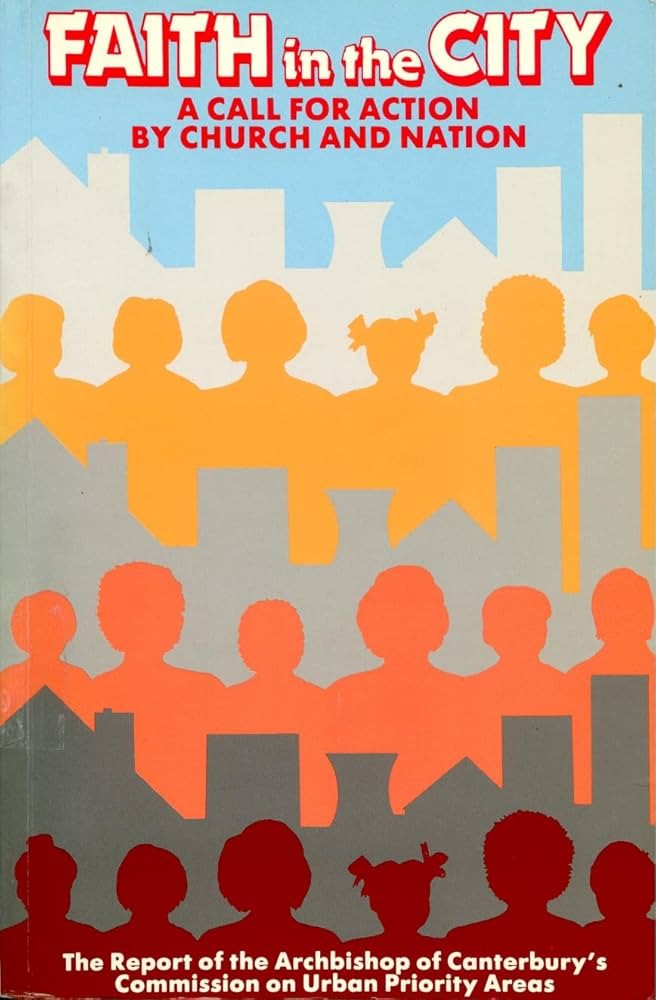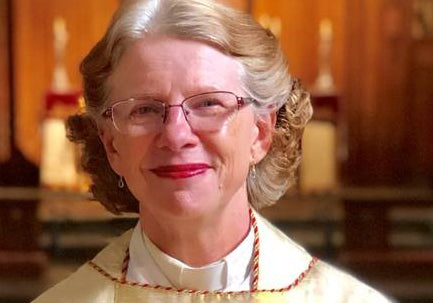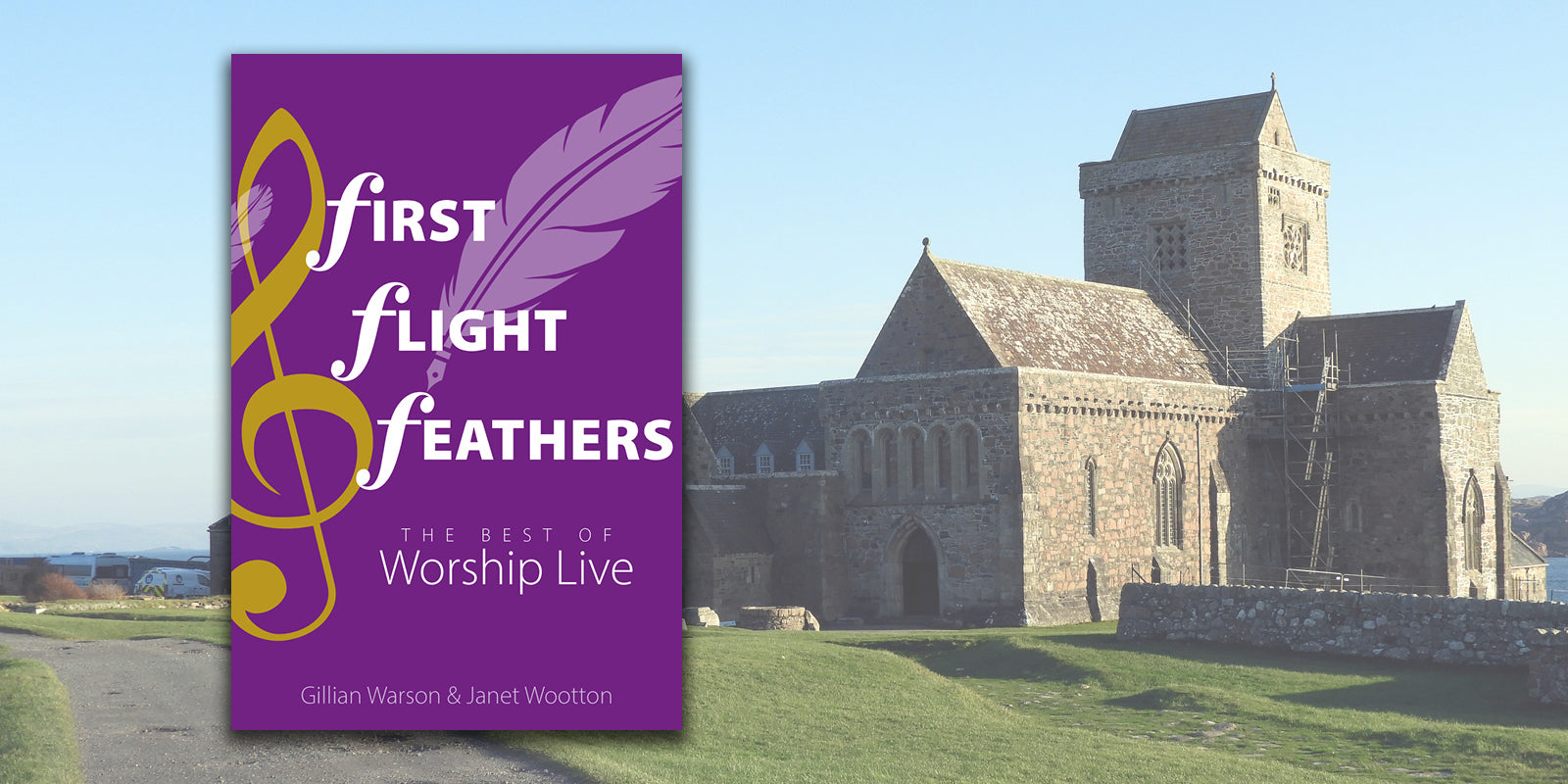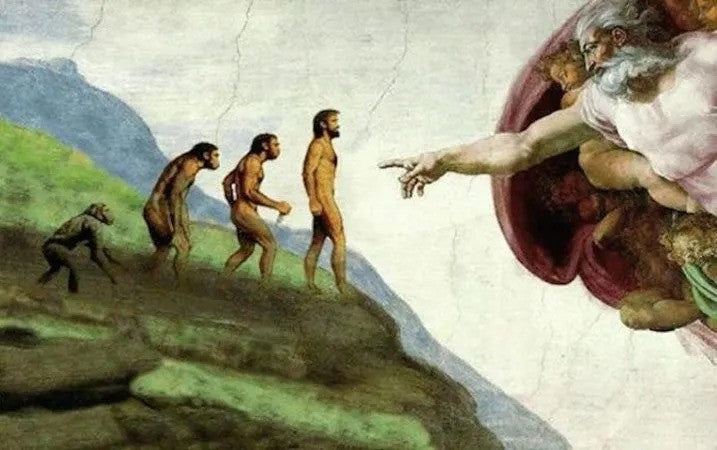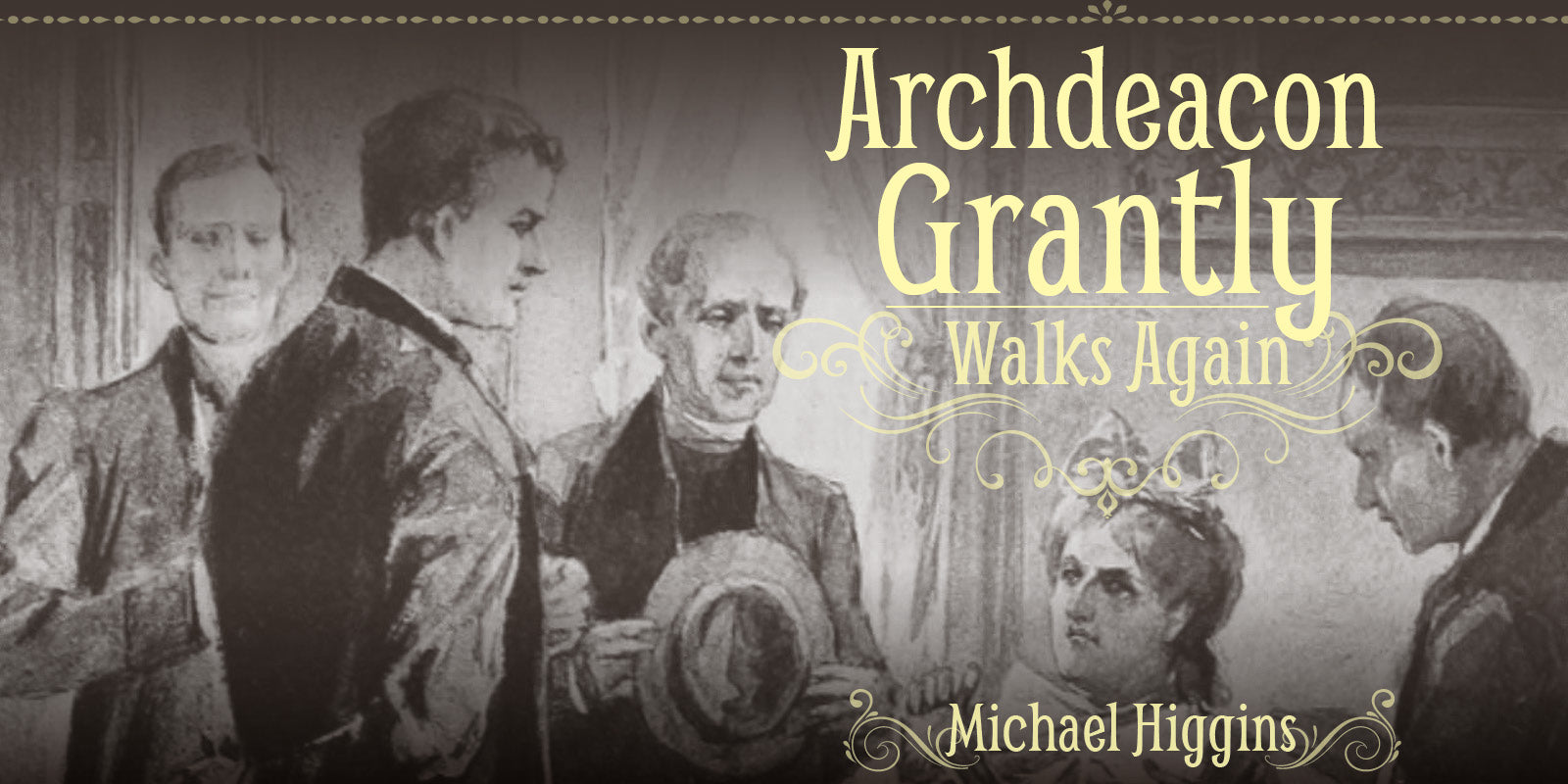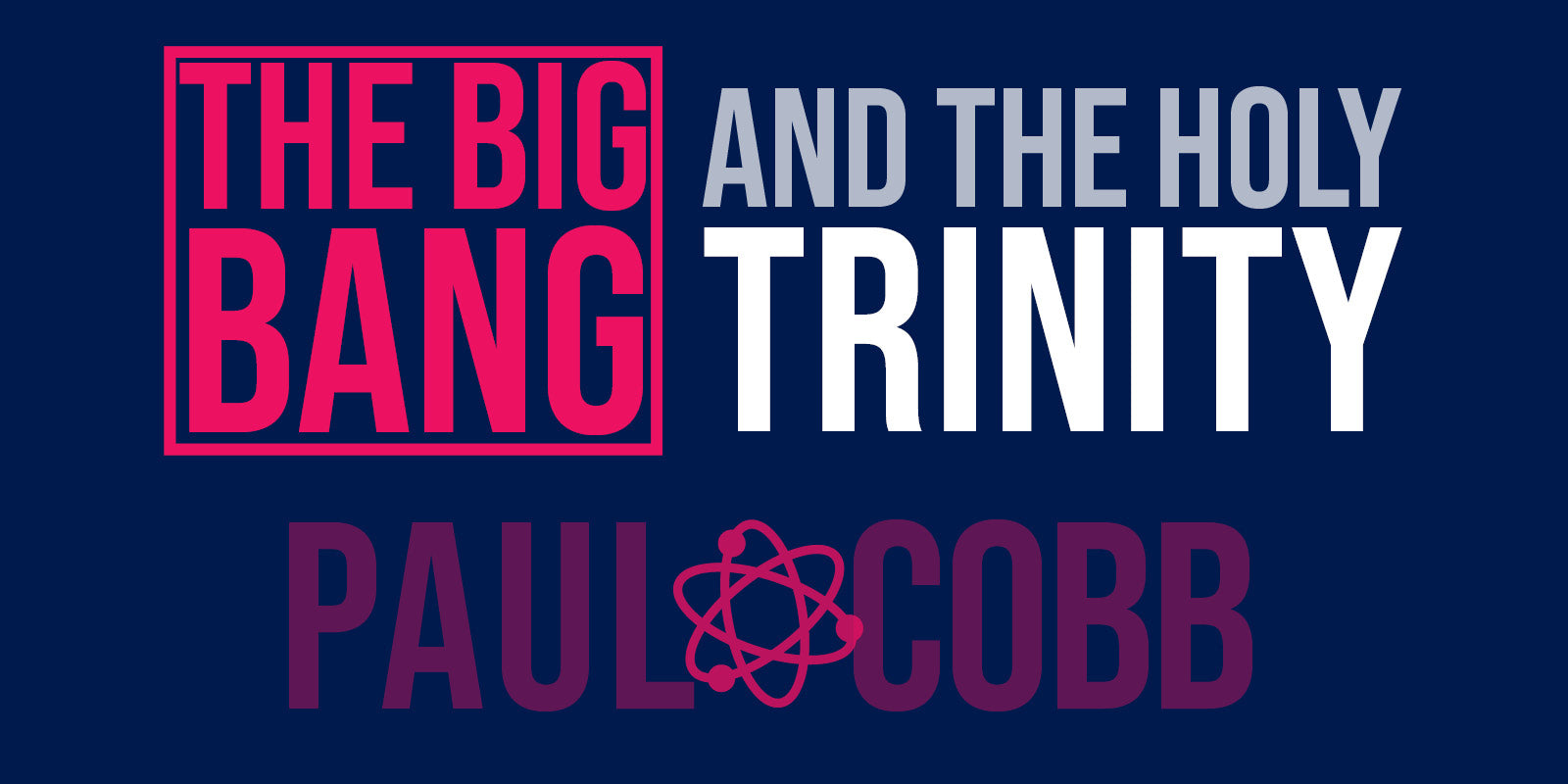
Image: The nave of Peterborough Cathedral (David Iliff / CC BY-SA)
“God said to Moses: ‘Come no nearer; take off your sandals; the place where you are standing is holy ground.’” (Exodus 3: 5) Emerging from the stories of the “patriarchs” of ancient Israel, this famous line shows how, from earliest days, place, location and shrines have been central to religious belief. Earlier still in the Old Testament, Jacob, at the end of his dream, utters equally evocative words: “How awesome is this place! This is none other than the house of God, this is the gate of heaven.” (Genesis 28: 17) Small wonder then, that we opted for this imagery in the title of our book about the life of English cathedrals. So many writers have stumbled upon similar images as they have reflected upon these remarkable buildings. John Loughborough Pearson, the outstanding nineteenth-century architect, said that a cathedral should be such as to bring every one of us to our knees in prayer, thanksgiving and homage to God. They are then shrines, even when no saint is buried there! Arts critic Philip Toynbee, who came to faith late in life, described his own semi-mystical experience at Choral Evensong in Peterborough Cathedral.
Holy Ground is a kaleidoscopic introduction to our cathedrals which, amongst other things, have become crucial to our national economy, acting as magnets to vast numbers of people for many and diverse reasons. But they are also some of the fastest growing centres of faith, prayer, worship and vision within our nation.
In this book, in fewer than two hundred pages, virtually every aspect of cathedral life is explored: so cathedrals remain one of the richest seedbeds for the development and nourishment of music and musicians in England: the choral tradition is unique. Cathedral choirs have sung in St John’s Lateran and St Peter’s Basilica in Rome: their contribution to music is seminal, as Richard Shepherd indicates. Or indeed, there is the parallel significance of cathedrals in the visual arts: in Chichester, for example, the works of Graham Sutherland, John Piper, John Skelton, Hans Feibusch and others jostle alongside Roman mosaics and Romanesque reliefs—and in a building which was the seat of perhaps the most prophetic Anglican bishop of the twentieth century, in the person of George Bell. Other cathedrals—St Paul’s with Henry Moore’s Mother and Child and Bill Viola’s Martyrs and then Coventry, itself a treasury of twentieth-century art—are just a few of the many examples one might quote.
But, as the example of George Bell indicates, cathedrals have also been focuses for Christianity’s prophetic voice: the beginnings of a network of night shelters for the homeless were in Norwich when Alan Webster was the Dean; Southwark, on London’s South Bank, remains a place of challenge and witness; Frank Bennett, at Chester in the 1920s, saw cathedrals as open common ground, there to gather all and any—those in need or those seeking a place of prayer. In recent weeks and months too, even when their doors have been closed, cathedrals have played an imaginative part. Lichfield has been sporting the National Health Service logo on its west front during the coronavirus pandemic; Lincoln was lit up in red, white and blue for the VE Day celebrations. Then, St Paul’s brought together the “Choir of the Nation”; Tom Daggett coordinated young choristers from all over the country, thereafter electronically mixing their voices into one glorious choir.
Of course, just as Holy Ground was approaching publication, a sense of crisis was around in the cathedral world, focused particularly on issues of finance at Peterborough, but with rumblings elsewhere too. In swift, perhaps over-swift reaction to this, the archbishops set up a working party to report yet once more on “cathedral governance”. Whenever the General Synod of the Church of England next meets, it will debate proposals developed from this working party’s report. In that report, by far the most quoted publication (outside the formal documents relating to Cathedral Measures) was Holy Ground. All members of the working party read advance copies of the book, and the chair of the group, the then Bishop of Stepney, Adrian Newman, spent a couple of hours with me as the editor. So: now is the time to order a copy of the book and find yourself at least one step ahead of the General Synod! Holy Ground ducks no issues, including those of finance and governance. These issues naturally have implications for music, art, development, cathedral furnishing—everything indeed that makes these building what they are.
At last a group of informed writers tackle questions crucial to the future of religion in Britain, and perhaps of the wider human condition.
Sir Simon Jenkins
At the heart, however, stands worship and prayer. These are the very raison d’être and foundation of these great churches. Two chapters of the book address these elements of cathedrals’ lifeblood head-on. What is it that they can offer which is distinctive and nourishing for the rest of the Church and for humanity as a whole? How can the skills and excellence in worship, which cathedrals are fortunate enough to marshal, transform people’s lives? Then too, how can the unique cycle of prayer, daily Eucharistic worship, the quiet praying of the morning office, and the glorious singing of Choral Evensong strengthen our offering to God? How does the history and heritage of these amazing buildings enrich this? All this is addressed within the gentle green covers of Holy Ground.
In the past year, both brief articles in journals and, more recently, a complete book have heralded the birth of a new discipline: “Cathedral Studies”. Happily Holy Ground rolled off the presses just in time to gain a mention. It is the latest in a series of books focusing directly on the life, worship and work of cathedrals, and of their part in the opus Dei, the work of God. With the closing of the common ground of our cathedrals these past months, don’t miss this opportunity to be in the forefront of the ever-unfolding lives of these “jewels in the crown” of English prayer, prophecy and worship…
Stephen Platten is an Assistant Bishop in the Dioceses of London, Southwark, and Newcastle, chairman of Hymns Ancient and Modern and of the governors of the Anglican Centre in Rome, and Chaplain to St Martin-within-Ludgate, London. He was formerly the Archbishop of Canterbury’s Secretary for Ecumenical Affairs, Dean of Norwich, and Bishop of Wakefield. He was a member of the Cathedrals Fabric Commission for England from 2006 to 2016 and Chair of the Church of England Liturgical Commission from 2004 to 2014.
Holy Ground is our July #BookOfTheMonth, digging deep into the life of England’s cathedrals and discussing such diverse topics as finance, growth, heritage, liturgy, development, music and art. Get your copy here.
For more on the future of England’s great cathedrals, read Dean of Chelmsford (and Holy Ground contributor) Nicholas Henshall’s recent blog here.
